The tiny house movement has captured the attention of people across the globe, especially those seeking a simpler, more sustainable lifestyle. Tiny houses, typically ranging from 100 to 400 square feet, are becoming increasingly popular as an alternative housing solution for digital nomads who desire a more adventurous, mobile lifestyle. These compact living spaces often incorporate ingenious design solutions and multipurpose furniture, allowing for comfortable and functional living while on the go.
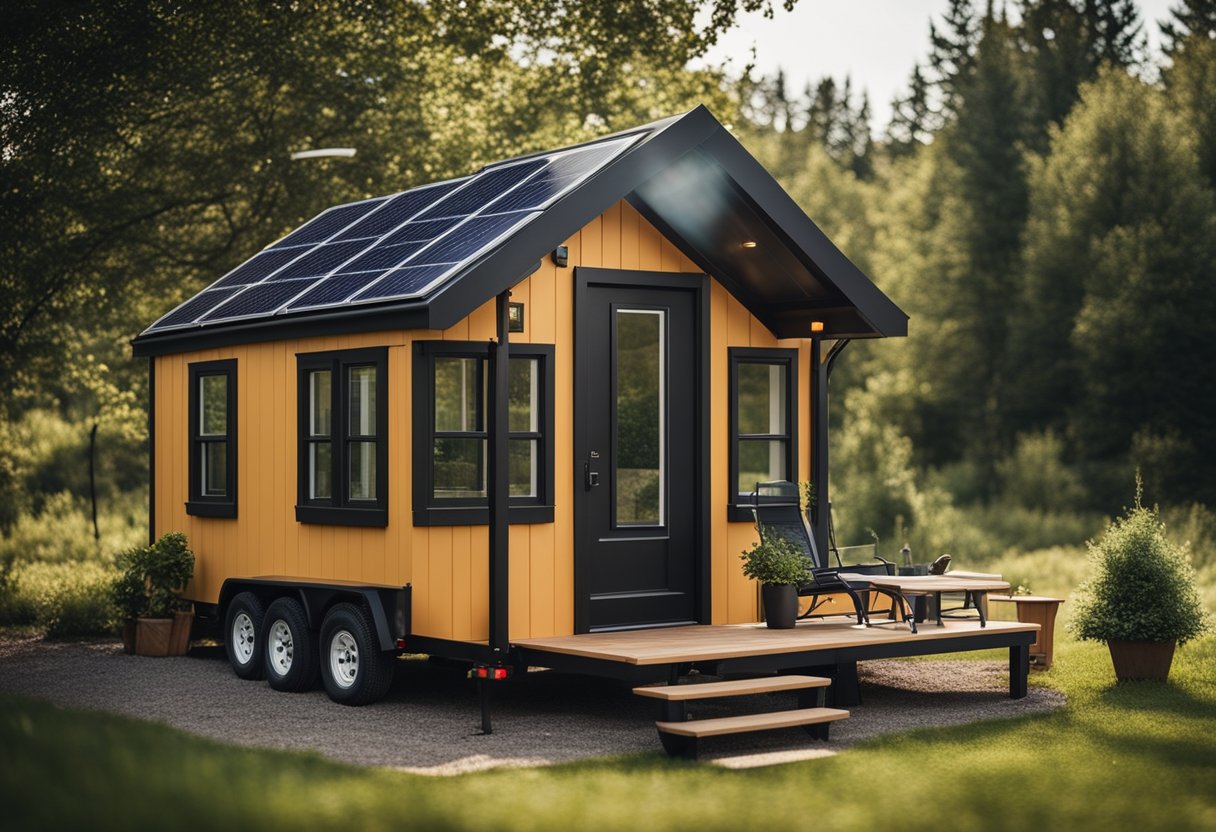
In recent years, tiny houses have also piqued the interest of savvy investors looking for unique and profitable investment opportunities. With the growing popularity of minimalistic living, tiny homes offer a lucrative rental market, providing both short-term and long-term options for those seeking unconventional accommodations. Moreover, the relatively low construction and maintenance costs associated with tiny houses make them an attractive venture for investors looking to diversify their portfolios.
Key Takeaways
- Tiny houses offer a unique investment opportunity within the growing trend of minimalistic living.
- Low construction and maintenance costs make tiny homes attractive to investors looking to diversify their portfolios.
- Digital nomads represent a key rental market for tiny home investors, offering both short-term and long-term accommodation options.
Understanding the Tiny Home Phenomenon
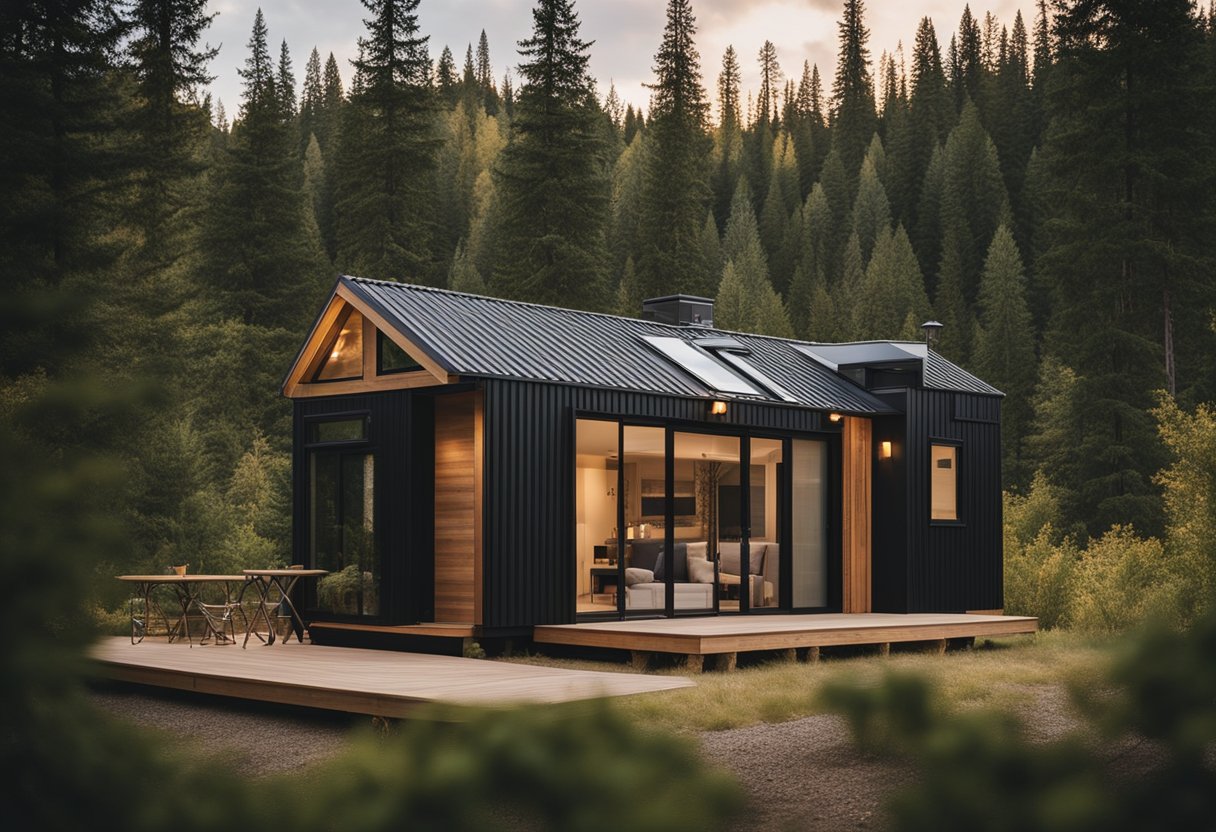
The Tiny Home Movement has been gaining popularity in recent years as more people embrace the idea of downsizing and reducing their environmental impact. For nomads, investing in a tiny house can provide not only a unique living experience but also an attractive return on investment in the world of real estate.
Tiny homes typically range from 100 to 400 square feet, exhibiting an incredibly efficient design to maximize space. In comparison, an average home in the United States is about 2,600 square feet, displaying a significant 2,200 square feet difference. Tiny houses are built to prioritize functionality, affordability, and eco-friendliness, all of which contribute to their growing appeal.
When considering an investment in tiny homes, nomads should be aware of the various options available. Some popular types of tiny houses include:
- Stationary Tiny Homes: These are built on a fixed foundation and offer long-term stability for residents.
- Tiny Houses on Wheels: These homes provide nomads with a mobile living space that can easily adapt to their changing locations and lifestyles.
- Prefab Tiny Homes: Pre-fabricated tiny homes are constructed offsite and delivered, making for a quicker setup process.
Various tiny home builders can cater to the specific needs of nomads. Companies like Tumbleweed Tiny House Company specialize in creating tiny homes on wheels, perfect for those who prefer a more mobile lifestyle.
When it comes to costs, tiny homes can be a more affordable option compared to traditional housing. Building a tiny house can range from $20,000 to $60,000, with factors such as size, design complexity, and materials influencing the final expense. Additionally, it’s crucial for investors to plan a budget that accounts for land acquisition and ongoing expenses as well.
Tiny home living may not be for everyone, but for nomads, it presents an attractive investment opportunity with numerous advantages. Embracing the concept of minimalism, these small dwellings offer an alternative living solution that represents a growing trend in real estate and housing preferences.
Tiny Houses as Investment Opportunity
The growing popularity of tiny houses presents an intriguing investment opportunity for both real estate investors and nomads alike. Some of the factors driving the tiny home trend include the desire for minimalism, affordability, and eco-friendliness. Real estate investors might consider venturing into this market, as it offers potential for high return on investment (ROI).
One of the main reasons that tiny house investment is gaining traction is due to the increased demand for affordable and sustainable housing options. The market for tiny homes is expected to grow by as much as $4.1 billion until 2027, with Northern America emerging as a fast-growing region1. This demand creates an exciting real estate investment opportunity for those willing to cater to the unique needs of tiny home enthusiasts.
Investors aiming for a high ROI can explore various investment strategies in the tiny home market. Purchasing land and developing a tiny house or tiny house community to rent out can be a promising option2. Alternatively, investing in the development or renovation and sale of tiny houses is another viable investment strategy.
In order to fully capitalize on this investment opportunity, it is crucial to consider various factors such as location, construction costs, and local regulations. A well-researched investment property can provide promising returns and tap into the growing market of eco-conscious and minimalistic consumers.
Some notable tiny home builders for real estate investors include:
- Mint Tiny House Company
- Tumbleweed Tiny House Company3
Real estate investors venturing into the tiny home market should carefully plan their investment strategy. Identifying reliable builders, planning marketing efforts, and determining potential rental income are essential steps in the process4.
In conclusion, the tiny house trend offers a unique and potentially profitable investment opportunity. Capitalizing on the growing demand for these affordable and sustainable homes can result in a healthy ROI for real estate investors. Just remember to conduct thorough research and plan your strategy accordingly to maximize your tiny home investment potential.
Footnotes
Tiny Home Construction and Costs
Building a tiny home can be an excellent investment for nomads seeking a low-cost, eco-friendly, and minimalist lifestyle. The construction process and costs differ depending on factors such as type of tiny home, materials, and labor. In this section, we will discuss various aspects of tiny home construction and costs.
A tiny home can be built by a professional builder or as a DIY project. Engaging a professional tiny home builder typically costs between $30,000 and $80,000, with luxury models going up to $150,000. On the other hand, DIY enthusiasts with construction skills can build their tiny homes for significantly lower costs.
Building a tiny house yourself requires excellent planning and preparation to avoid unexpected expenses, delays, and stress. It is crucial to create a budget that accounts for construction materials, labor, and potential modifications to meet local building codes. When starting from scratch, DIY builders can save money by purchasing building materials in bulk, repurposing materials, and employing creative designs.
Some nomads choose to purchase a tiny house shell, which is a partially finished tiny home that provides the basic structure, allowing the owner to complete the interior at their own pace and within their budget. Shells can cost anywhere from $10,000 to $30,000 depending on the design and materials used.
Here is a breakdown of some typical construction costs for a tiny home:
| Item | Cost Range |
|---|---|
| Tiny House Shell | $10,000 to $30,000 |
| Flooring | $500 to $5,000 |
| Insulation | $500 to $2,000 |
| Electrical System | $500 to $3,000 |
| Plumbing System | $1,000 to $4,000 |
| Interior Finishing | $3,000 to $9,000 |
*Note that these costs are rough estimates and will vary based on location, materials, and individual needs.
It is essential to research local building codes and zoning regulations before starting the construction process. These codes may dictate specific requirements regarding foundation, plumbing, and electrical systems, among other aspects of the structure. Becoming familiar with these requirements will ensure that the tiny home is safe, compliant, and insurable.
In conclusion, tiny home construction and costs vary significantly depending on the builder’s choice, skillset, and preferred materials. By understanding the key factors affecting tiny home construction and planning accordingly, nomads can create an affordable, customizable, and functional living space.
Location and Zoning Considerations
When considering investing in a tiny house, one of the key factors you need to consider is the location. It’s important to be aware of the varying zoning laws and local regulations that can impact where you can place your tiny house. These rules may differ between urban areas, rural locations, and specialized communities like tiny house communities, mobile home parks or trailer parks.
In many cases, local zoning laws can impose specific size and design requirements for tiny homes, such as minimum square footage, height restrictions, and setbacks from property lines1. This can impact your tiny house design and layout. Furthermore, it’s crucial to understand how your tiny house will be classified. For instance, tiny homes on wheels are often classified as RVs, and may only be placed in designated RV parks2. On the other hand, foundation-built tiny homes are subject to different zoning and building regulations2.
Here are some common location options for tiny houses:
- Urban Areas: Cities may have specific zoning laws tailored to tiny houses, but they can also be more restrictive due to space limitations and concerns for property value1. It’s important to research the zoning regulations of the city where you want to invest in.
- Rural Locations: Typically less restrictive than urban settings, rural areas can provide more flexibility in terms of tiny house placement. However, it’s still essential to check with your local zoning department to avoid any legal complications1.
- Mobile Home Parks and Trailer Parks: These types of communities can be a good option for tiny houses on wheels because they already have designated spaces and utility connections for RVs2. However, it’s still important to check with management for any size requirements or restrictions.
- Tiny House Communities: As the trend of tiny living gains momentum, the creation of specialized tiny house communities is becoming more prevalent. These communities are often specifically designed to accommodate tiny homes and can offer a sense of community, shared resources, and facilities3.
Before committing to a specific location, be sure to investigate the zoning laws and local regulations to ensure your tiny house investment is not only legally compliant but also suits your desired lifestyle. By taking these factors into account, you can make an informed decision about the right location for your tiny house.
Footnotes
Challenges and Solutions in Tiny House Investment
Investing in tiny houses for nomads presents its own set of unique challenges and solutions. One of the primary concerns for potential investors is the limited size and space available in a tiny house. However, innovative design solutions such as multi-purpose furniture and clever storage solutions help maximize available space. For instance, the use of a loft for an additional sleeping area or integrating hidden storage in stairs or under the floor can make the most of the small footprint1.
Another challenge is providing essential amenities, such as bathrooms and laundry facilities within the confined space. Many tiny houses efficiently utilize compact appliances and fixtures that perform multiple functions, leading to a smaller overall space requirement. For example, a combination washer-dryer unit eliminates the need for two separate appliances, and composting toilets can effectively take care of waste without requiring a complex sewage system2.
Tiny houses are usually built on a trailer, which offers the advantage of location flexibility3. This mobility can make tiny houses more appealing to nomads, who may frequently move to new locations. However, it may also lead to challenges in finding available land to park and live legally. To overcome this hurdle, investors should research local zoning regulations and tiny house communities that cater to nomads, offering shared resources and a sense of community.
The real estate market for tiny houses, while growing, remains a niche segment4. As a result, assessing the resale value of a tiny home can be difficult. Investors should consider factors such as customization and the quality of materials used in the construction of the tiny house, as well as the general demand for such homes in the area. A well-built, thoughtfully designed, and aesthetically appealing tiny home may have better resale potential.
In conclusion, tiny house investment for nomads requires careful consideration of various factors, including space optimization, functionality, location flexibility, and market dynamics. By exploring innovative design solutions and staying informed on local regulations and market trends, investors can maximize their tiny house investment and cater to the needs of nomadic tiny house dwellers.
Footnotes
The Role of Financing in Tiny House Investment
Financing plays a crucial role in investing in a tiny house for nomadic lifestyles. There are several financing options available to potential buyers, each with its pros and cons. In this section, we will explore some of these options, including mortgage, personal loan, credit card, unsecured loan, and RV loan, to help you make an informed decision.
A mortgage is a common financing option for traditional homes, but it might be challenging to secure for tiny houses due to their unconventional nature. Some banks might offer tiny house mortgages, but obtaining one can be difficult. One such provider of tiny house mortgages is Liberty Bank of Utah, which offer loans with terms ranging from 5 to 23 years, depending on the borrower’s credit history and income.
Personal loans can be an alternative to mortgages for financing a tiny house. These loans are typically unsecured, meaning they do not require collateral like a mortgage. They can also have more flexible terms and potentially lower interest rates than credit cards. Some tiny house builders or lending institutions specialize in offering personal loans specifically tailored to tiny house purchases.
Credit cards may be used as a financing option in some situations, although their high-interest rates can make them less attractive. Using a credit card for a tiny house investment would likely be best suited for covering short-term expenses or small purchases, rather than the entire cost of the house.
Unsecured loans are another possibility for financing a tiny house. These loans don’t require collateral, but they usually come with higher interest rates than secured loans. Unsecured loans can be a good option for those with strong credit scores and steady income who don’t want to risk their assets as collateral.
RV loans might be suitable for those seeking to purchase a tiny house on wheels. Since many tiny houses are considered recreational vehicles, some financial institutions and credit unions may offer RV loans as a financing option. These loans typically have competitive interest rates and extended terms, making them an attractive choice for some buyers. Bankrate explains how downsizing to micro-living spaces has become a popular trend, contributing to the growth of tiny house investments.
In conclusion, the financing options for a tiny house investment will vary depending on the borrower’s individual needs and financial situation. Exploring these different options, such as mortgages, personal loans, credit cards, unsecured loans, and RV loans, can help potential investors find the most suitable and affordable method for funding their tiny house dreams.
Utilising Tiny Homes for Rental Income
Tiny homes have gained popularity in recent years, and many people are seeing the potential in using them as rental properties. For digital nomads and those looking to diversify their investment portfolio, this presents a unique opportunity to generate rental income from short-term and monthly rentals.
Airbnb has become a popular platform for tiny house owners to list their properties as vacation rentals. With the rise in demand for unique accommodation options, tiny homes can offer a distinctive experience for travelers seeking alternatives to traditional hotels. Listing a tiny house on Airbnb allows for flexibility in rental periods, often ranging from a few days to several weeks.
In addition to short-term rentals, tiny homes can also be utilized for monthly rentals. This option provides a more stable income stream, appealing to those who prefer longer stays or are temporarily relocating for work or personal reasons. Long-term renters are often willing to pay a premium for the convenience of fully furnished and move-in ready accommodations, such as well-designed tiny houses.
Another advantage of investing in tiny homes as rental properties is their affordability. On average, tiny houses in the United States measure around 225 square feet and cost approximately $52,000, making them 87% more affordable than traditional single-family homes. This lower cost of entry makes it easier for investors to enter the rental market and potentially see quicker returns on their investment.
To maximize the potential for rental income, it’s essential to carefully consider the design and features of the tiny home. Striking a balance between aesthetic appeal and functionality is crucial, as renters are often drawn to tiny homes for their unique design elements and efficient use of space. Some popular features to consider include:
- High ceilings and ample natural light
- Space-saving furniture and storage solutions
- Outdoor living spaces, such as decks or patios
- Energy-efficient appliances and sustainable materials
In conclusion, investing in tiny homes as rental properties presents a promising opportunity for generating income through both short-term and monthly rentals. With careful consideration given to design and features, tiny houses can attract renters seeking unique accommodation experiences, ultimately providing a strong return on investment for the property owner.
Maintenance and Operation of Tiny Homes

One of the main benefits of investing in tiny homes for nomads is the reduced maintenance and operational costs. Nomads can enjoy a simpler lifestyle while reducing the impact on their wallet. In this section, we will discuss some of the key aspects of maintaining and operating a tiny home.
Utilities: Tiny homes typically require fewer utilities than traditional homes. Many tiny homes are designed to be off-grid, utilizing solar power for electricity and collecting rainwater for plumbing. This not only saves on utility costs but also promotes a more sustainable and environmentally-friendly lifestyle. However, it is crucial to maintain these systems regularly to ensure their efficiency and longevity.
Heating and Cooling: Maintaining a comfortable temperature in a tiny home can be achieved through various means. Some tiny homes have built-in heating and cooling systems, while others rely on portable options like electric space heaters and air conditioning units. Insulation is essential for maintaining a consistent temperature throughout the year. With proper insulation and ventilation, it becomes easier to manage temperature in small spaces.
Maintenance: General maintenance is key to keeping a tiny home in its best condition for years to come. To avoid major repairs, it’s important to routinely check for leaks, inspect the roof, and assess the structural integrity of the home. Regularly cleaning and repairing the exterior can also help maintain the aesthetics and durability of the home.
Amenities: One of the primary concerns for nomads is the availability of amenities such as bathroom, kitchen, and storage facilities. Though tiny homes may have limited space, it’s essential to prioritize the inclusion of basic amenities that cater to the lifestyle needs of the homeowner. Clever use of space can maximize the functionality of these amenities without compromising on comfort.
In conclusion, the maintenance and operation of tiny homes are generally more straightforward and cost-effective than those of traditional homes, making them an appealing option for nomads. By focusing on the aspects mentioned above, such as utilities, heating and cooling, maintenance, and providing the necessary amenities, tiny home owners can enjoy a comfortable and sustainable lifestyle.
Understanding the Market for Tiny House Rentals

The tiny house movement has gained significant popularity in recent years, as more and more Americans are embracing a minimalist lifestyle and downsizing their living spaces. This trend can be attributed to various factors, such as the rising cost of housing, a growing desire for environmentally friendly living, and the influence of reality TV shows depicting tiny home lifestyles. This market growth has created new investment opportunities for those interested in offering tiny houses as rental properties.
One important aspect of understanding the market for tiny house rentals is identifying the main categories of individuals who seek such accommodations. Some groups include:
- Professionals – looking for affordable and convenient housing options, without the need for a large space
- Students – seeking budget-friendly accommodations near their educational institutions
- Environmentally conscious individuals – attracted to the sustainable aspect of tiny homes and their reduced ecological footprint
- Minimalist lifestyle enthusiasts – embracing the tiny home philosophy to declutter and simplify their living spaces
The tiny house rental market is further bolstered by the popularity of reality TV shows showcasing inventive and aesthetically pleasing tiny home designs. This has attracted a wider audience towards adopting a tiny home lifestyle, thus expanding the potential customer base for rentals.
Another crucial element in this market is the affordability factor. With tiny houses averaging around $52,000, investors can potentially enter this market with a relatively low upfront investment compared to traditional real estate. This also means lower monthly expenses for renters, making tiny house rentals an attractive option for those looking to save on housing costs.
Understanding the market for tiny house rentals is essential for investors and property owners considering this niche. By catering to the needs of professionals, students, environmentally conscious individuals, and minimalist lifestyle enthusiasts, investors can potentially tap into a growing and sustainable market. However, as with any investment, it is crucial to conduct thorough research into local regulations, zoning laws, and rental demand before diving into the tiny house rental market.
Marketing Your Tiny Home Rental Property

Effectively marketing your tiny home rental property is essential for attracting potential renters and ensuring a steady income stream. Several marketing channels can be used to showcase your tiny house and reach the target audience. Here are a few strategies to consider:
Online Platforms: Listing your property on dedicated websites like TinyHouseListings.com is an excellent idea. This platform specializes in advertising tiny houses and attracts enthusiasts specifically interested in renting tiny accommodations. Besides, also consider listing your property on popular vacation rental websites like Airbnb and VRBO to increase your property’s visibility to a wider audience.
Social Media: Utilizing social media platforms can tremendously increase your property’s exposure. Particularly, Instagram can help showcase your tiny house with eye-catching photos and videos. Share high-quality images, use relevant hashtags, and keep the captions engaging and informative. Additionally, connect with communities and influencers in the Tiny House movement to further expand your reach.
Content Marketing: Create engaging blog posts or articles to provide helpful information to your target market. Topics can include tips for living in a tiny house, recommendations for local attractions, and the benefits of staying at your tiny home property. This approach will not only improve your property’s online presence but also establish credibility with potential renters.
Offline Marketing: Don’t underestimate the power of traditional marketing techniques like print advertising, local events, or word-of-mouth. Distribute flyers, attend local festivals or conferences related to tiny houses, and share information about your rental property with friends and family to enlarge your network.
In summary, a successful marketing plan should combine a mix of online and offline strategies, emphasizing reaching out to target audiences within the Tiny House community. By using platforms like TinyHouseListings.com and Instagram, you can attract nomadic renters and turn your tiny house investment into a profitable venture.
Factors Influencing the ROI of Tiny Home Investments
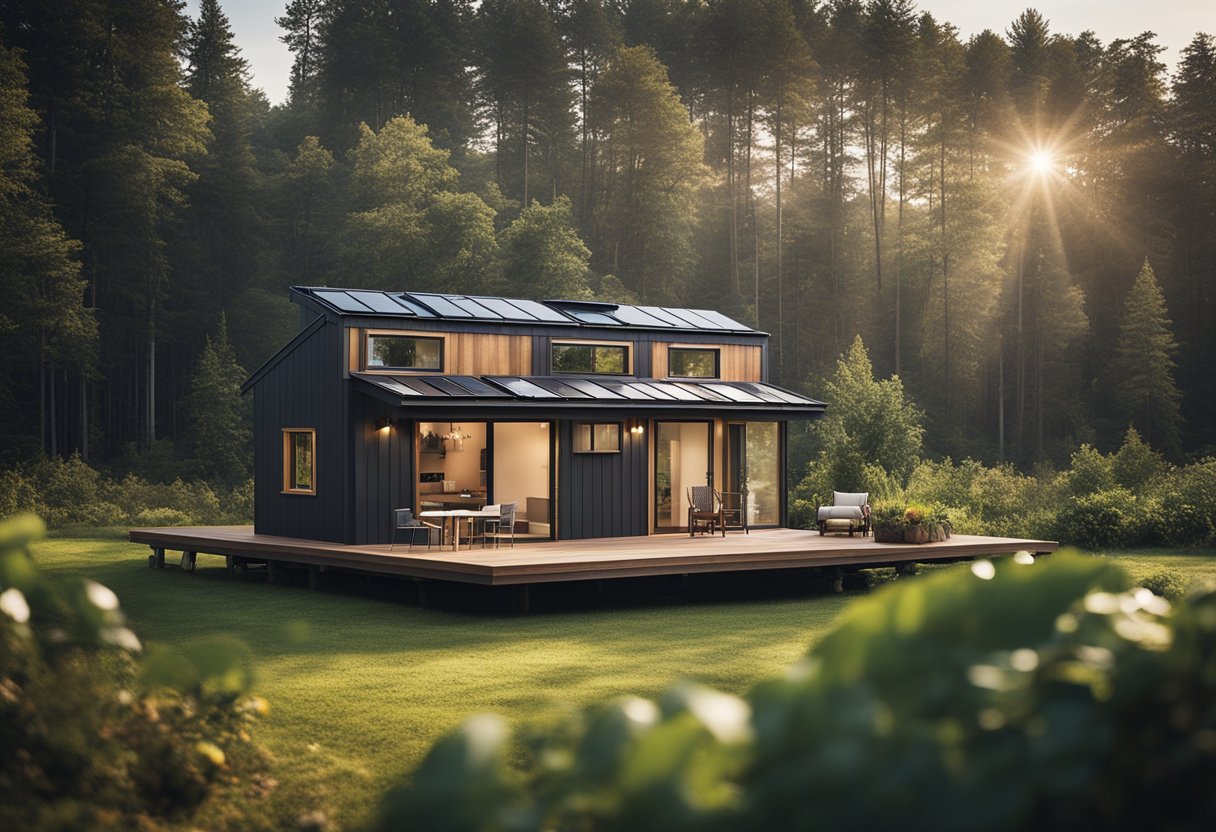
When considering investing in tiny homes, understanding the factors that influence the return on investment (ROI) is crucial. By evaluating each element, investors can make better-informed decisions about the potential profitability of a tiny house investment.
Property Taxes and Insurance: The expenses associated with owning a tiny home include property taxes and insurance. Taxes vary by location, so it is essential to account for local rates. Insurance costs, on the other hand, are generally lower for tiny homes because they have less square footage. As expenses impact the ROI, lower costs can make the investment more appealing.
Utility Bills: Tiny homes are often more energy-efficient due to their smaller size, leading to lower monthly utility bills. This reduction in cost not only benefits the homeowner, but can also make the property more attractive to potential renters or buyers if the investor decides to sell or lease.
Additional Income: There are several opportunities for generating additional income from tiny home investments. For instance, investing in a property with multiple tiny homes or adding a tiny unit on an existing property. This can lead to increased rental income or potential for profit when reselling.
Budget Considerations: Budgeting for a tiny home investment is essential to achieving a positive ROI. An investor needs to consider the initial purchase price, construction costs (if building from scratch), maintenance, and repairs. Understanding the full scope of the housing budget can help an investor make a wise decision and maximize their ROI.
Resell Potential: The tiny home market has grown over the years, and it is important to consider the resell potential when investing in one. Some factors that can influence the resale value include location, design, and the overall demand for tiny homes in the area.
In conclusion, a thorough evaluation of property taxes, insurance, utility bills, additional income opportunities, budget considerations, and resell potential can help an investor make an informed decision about tiny home investments. By considering these factors, they can better understand the potential ROI and manage risks involved in this emerging real estate trend.
Environmental and Lifestyle Benefits of Tiny House Investments
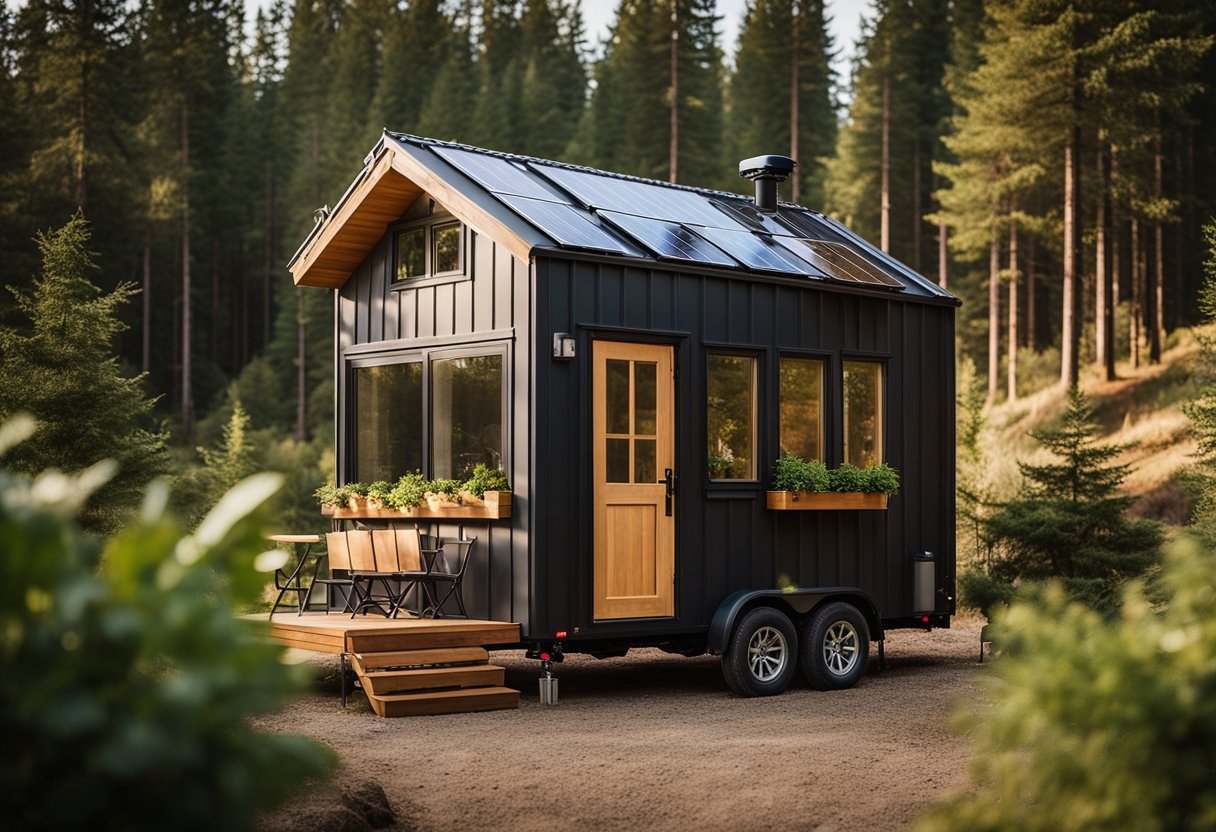
Investing in tiny houses offers a variety of benefits that cater to the environmentally conscious and nomadic lifestyle. Not only do these homes provide financial advantages, but they also contribute to a more sustainable and eco-friendly way of living. In this section, we will discuss some of the key environmental and lifestyle benefits of investing in tiny houses.
Tiny houses are known for their environmentally friendly nature. They require less energy to heat and cool, which results in lower energy consumption and greenhouse gas emissions. This significantly reduces the owner’s carbon footprint and promotes a more sustainable lifestyle. Moreover, tiny houses often utilize sustainable materials, such as recycled or upcycled materials, further demonstrating their commitment to environmental conservation.
In terms of mobility, tiny houses provide an unparalleled advantage for those seeking a nomadic lifestyle. Many tiny houses are built on wheels, offering the freedom to travel with their home. This allows for greater flexibility and adaptability to various locations and climates and eliminates the need for multiple properties.
The compact nature of tiny houses also encourages more deliberate consumption, as there is limited space for belongings. This could lead to a more minimalist lifestyle that reduces waste by valuing quality over quantity.
Here are some of the key environmental and lifestyle benefits of tiny house investments:
- Environmentally friendly construction and materials
- Reduced carbon and environmental footprints
- Increased mobility and adaptability
- Encouragement of minimalism and sustainable living
In conclusion, tiny house investments not only cater to a simpler, more affordable lifestyle but also promote sustainability and environmental consciousness. Embracing this eco-friendly way of living can have far-reaching benefits both for individuals and the planet.
Legal and Regulatory Challenges
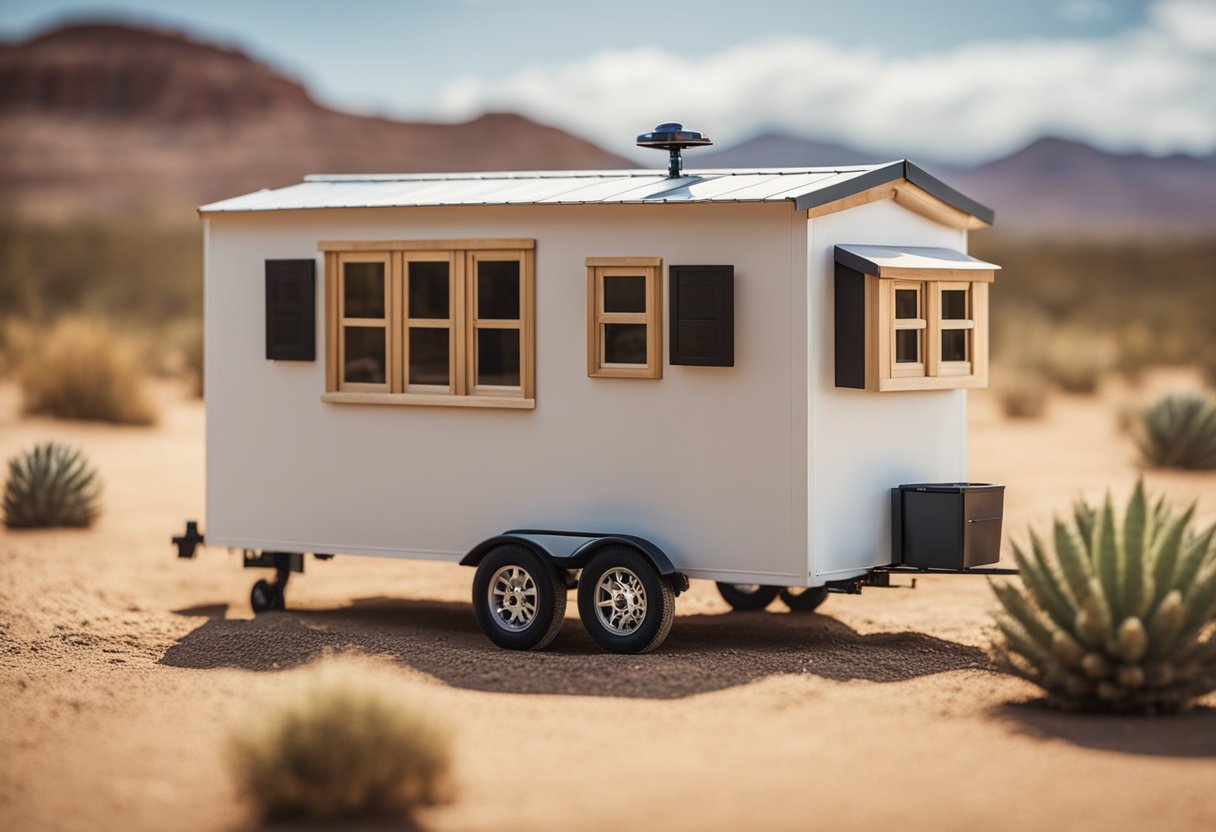
Investing in tiny houses for nomads presents unique legal and regulatory challenges. One of the primary hurdles to overcome is navigating the complex zoning and building regulations that may restrict the placement and construction of tiny homes. In many instances, tiny homes must be built on the property of a single-family lot with a normal-size home already present and classified as a secondary dwelling unit, such as a carriage house or in-law suite.
Additionally, tiny homes on wheels (THOWs) often fall into a grey area between traditional homes and RVs. This means that they may be subject to specific building codes or regulations, all of which vary by location. To ensure the legality of a tiny house, investors need to be familiar with the local building codes and zoning laws that govern their particular area.
Here is a summary of key legal challenges faced by tiny house investors:
- Zoning and building laws
- Classification as a secondary dwelling unit
- Building codes for tiny homes on wheels
Another issue faced by nomads looking to invest in tiny homes is the challenge of financing and mortgages. Traditional bank financing options may be less likely to approve loans for tiny houses due to their unconventional nature. Moreover, finding a lender willing to finance a tiny home can be a difficult task, as they are often uncertain about the tiny house market and the risks involved.
Lastly, the lack of standardized building codes and zoning laws across different states and municipalities makes it difficult for tiny house owners to find suitable land for their investment. It is crucial to research the legal requirements in each location to ensure compliance with all regulations.
In summary, investing in tiny houses for nomads involves tackling legal and regulatory challenges, including zoning and building laws, classification as secondary dwelling units, and financing options. A thorough understanding of these challenges is essential for success in this niche market.
Analyzing the Resale Value of Tiny Houses
When considering the purchase of a tiny home, it’s essential to understand its potential resale value. As with any investment, understanding the factors affecting the value of a tiny house is crucial for making an informed decision.
Tiny houses have been gaining popularity as an option for nomads and minimalists due to their affordability and portability. One of the main factors contributing to the resale value of a tiny house is its construction quality. Certified tiny houses, whether on wheels or foundations, are built with a focus on superior design and materials, which helps them retain their value over time.
Another factor that can impact the resale value of a tiny home is customization. Many tiny homes are designed and built to meet specific needs and preferences. While this can be advantageous for the original owner, it can limit the appeal to potential buyers when it is time to sell. To maximize the resale value, it’s advisable to strike a balance between personalization and functionality that appeals to a broader audience.
Location is another significant determinant of a tiny house’s resale value. Supply and demand in the local real estate market can directly impact the value of a tiny home, similar to traditional houses. Additionally, availability of suitable land and local regulations play a role in determining the overall value of a tiny house in a specific area. For instance, areas with a higher demand for alternative housing options may yield a higher resale value.
When considering a tiny house for fix and flip purposes, be mindful of the overall costs involved. As the price range of DIY tiny homes varies between $10,000 and $30,000, you must carefully consider the expense of materials, labor, and any required repairs or upgrades to make an informed decision.
In conclusion, the resale value of a tiny house is influenced by several factors, including construction quality, customization, and location. In order to maximize the potential return on investment, it is essential to carefully research and weigh these factors when buying a tiny home. Moreover, tiny house owners must consider the limited space and prioritize their belongings to suit their minimalist lifestyle and maintain the overall appeal of the property.
Frequently Asked Questions
What are the potential returns on a tiny house investment?
The returns on a tiny house investment can vary depending on factors such as location, rental demand, and property management. Long-term rental income, short-term vacation rentals, or personal use are all common objectives for a tiny home investment property. Benzinga reports that these investments can be lucrative if managed effectively.
How do prefab cube homes compare to traditional tiny houses?
Prefab cube homes are an alternative to traditional tiny houses, offering a modern, minimalist design with efficient use of space. Both prefab cube homes and tiny houses emphasize simplicity, downsizing, and sustainability. The main difference, however, is the manufacturing process. Prefab homes are built off-site and assembled on location, which can save time and construction costs. Traditional tiny houses are built on-site or purchased pre-built from a custom builder like Tiny Living.
What factors determine the resale value of a tiny house?
The resale value of a tiny house is influenced by factors such as quality of construction, location, age, and customization. A well-built tiny house with modern amenities and a desirable location can fetch a higher resale value than an older, less well-maintained unit. Additionally, tiny houses on wheels may have different resale value factors compared to those on permanent foundations.
How can tiny houses be utilized for generating income?
Investors in tiny houses can generate income through long-term rental, short-term vacation rentals, or a combination of both. Platforms like Airbnb and Vrbo facilitate short-term rentals, while long-term rentals can be sought through local classifieds or property management companies. TinyHouse.com points out that the tiny house movement continues to grow, creating demand for rental properties.
What are the tax implications and legalities of owning a tiny house?
The tax implications and legalities of owning a tiny house can vary depending on the location and type of tiny house you own. Local zoning and building codes may impose restrictions on where a tiny house can be placed or how it can be used. It is crucial to research the specific regulations in your area to ensure compliance. For tax purposes, tiny houses used as rental properties or investment vehicles may have different implications compared to those used as personal residences.
What is the average cost of maintaining a tiny house?
The cost of maintaining a tiny house is typically lower than that of a traditional home due to its smaller size and reduced utility needs. However, maintenance costs can still vary depending on factors such as age, materials, and owner upkeep habits. On average, custom-built tiny houses by a reputable company can cost between $25,000 and $50,000 when DIY or $65,000 and $100,000 when professionally built, as reported by Tiny Living. Ongoing expenses like utilities, insurance, and property taxes should also be considered when evaluating the overall maintenance costs.
Conclusion
Achieving financial freedom is a shared goal among many individuals, and the tiny house movement offers a viable path towards this objective. By embracing tiny house living, it is possible to cut down on costs and even escape the burden of a mortgage, as 68% of tiny homeowners have managed to do according to a 2018 report.
Several aspects of the tiny home lifestyle will naturally appeal to nomads. The inherent simplicity of a small space fosters creativity, resourcefulness, and comfort. With a desire to lead a minimalist life, nomads often value the tiny house experience that emphasizes functionality and organization. In addition, such compact living spaces afford residents more time for leisure, travel, and self-discovery.
Another significant advantage for nomads is location flexibility. Many tiny homes are built on wheels, enabling them to be easily transported from one place to another. This mobility allows residents to explore new environments and pursue fresh opportunities while not sacrificing the familiarity of their home. Indeed, investing in tiny houses can be highly rewarding, especially when considering aspects like vacation rentals and long-term leases.
In conclusion, the tiny house movement provides a unique opportunity for nomads to enjoy a sense of freedom and mobility while also making a potentially profitable investment. By carefully weighing the pros and cons and making informed decisions, one can successfully merge financial gain with a satisfying and sustainable lifestyle.




